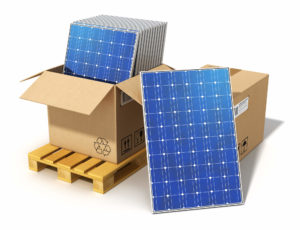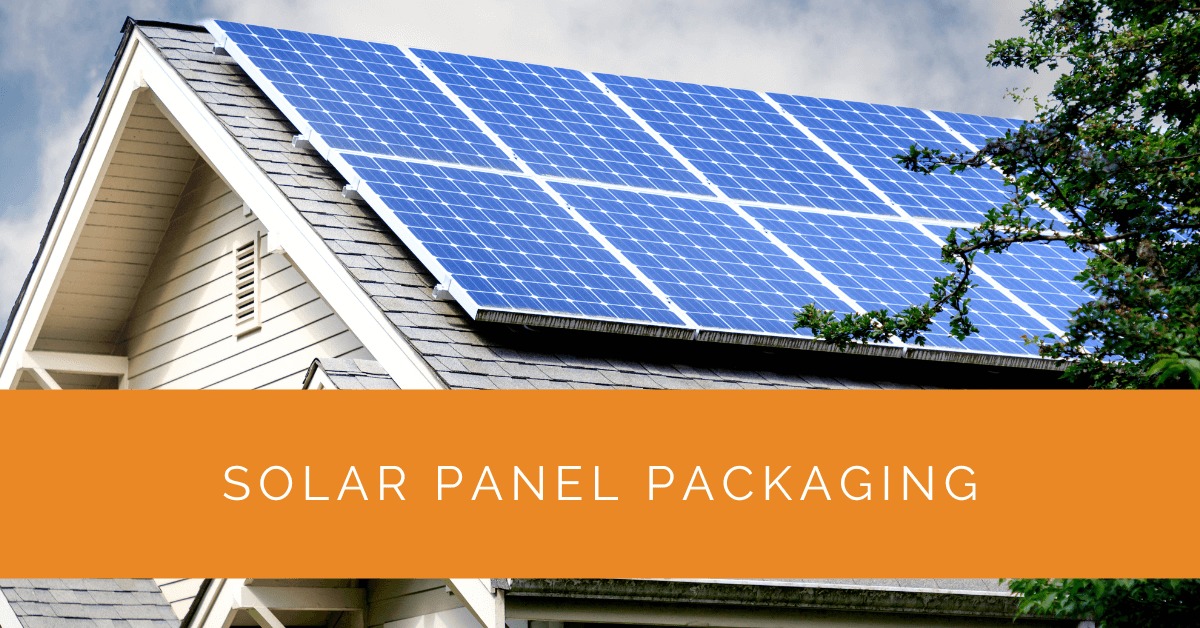Solar panels have emerged as a pivotal technology in harnessing the sun’s power as the demand for renewable energy continues to grow. These intricate devices, composed of solar cells that convert sunlight into electricity, require careful handling and transportation to maintain their optimal performance. Proper solar panel packaging becomes paramount to ensure their safe transit and efficient handling. In this article, we will explore the significance of effective solar panel packaging, delve into the selection of appropriate materials and design, discuss secure loading and unloading techniques, highlight common mistakes to avoid, and examine how packaging impacts transportation efficiency. By understanding the importance of proper solar panel packaging, we can ensure the protection and longevity of these essential components in the renewable energy landscape.
Contents
- 1 Key Takeaways
- 2 The Significance of Effective Solar Panel Packaging
- 3 Choosing the Right Packaging Materials and Design
- 4 Packaging Techniques for Secure Loading and Unloading
- 5 Avoiding Common Mistakes in Solar Panel Packaging
- 6 The Impact of Packaging on Transportation Efficiency
- 7 Experience Solar Excellence with Us!
- 8 Conclusion
- 9 FAQ
Key Takeaways
- Effective solar panel packaging is crucial for protecting panels during transportation, minimizing stress and impact, and reducing the risk of accidents.
- Choosing the right packaging materials and design, such as durable and weather-resistant options, is essential for safeguarding solar panels.
- Secure loading and unloading techniques, including proper palletization and vertical positioning, help ensure the safe transport and handling of solar panels while avoiding common packaging mistakes.
The Significance of Effective Solar Panel Packaging
Proper packaging is essential for safeguarding solar panels during transportation. Let’s explore why effective packaging is of utmost importance:
- Protection against Damage: Solar panels are susceptible to various external factors such as impact, vibrations, temperature fluctuations, and moisture. Effective packaging protects against these elements, ensuring the panels arrive at their destination unharmed.
- Minimizing Stress and Impact: Transporting solar panels involves handling and loading procedures that can subject them to mechanical stress. Proper packaging minimizes stress by cushioning the panels and absorbing any impact that may occur during transit.
- Reducing the Risk of Accidents: Secure packaging protects the solar panels and minimizes the risk of accidents during transportation. By preventing movement or shifting, packaging helps maintain stability, preventing potential damage to the panels and ensuring the safety of transport personnel.
Choosing the Right Packaging Materials and Design
Selecting the appropriate packaging materials and design is crucial for ensuring the safe transport of solar panels. Consider the following factors when choosing solar panel packaging:
- Durability: Opt for packaging materials that are strong, sturdy, and capable of withstanding external forces. Reinforced cardboard or corrugated boxes are commonly used for solar panel packaging due to their durability and resistance to compression.
- Cushioning and Protection: Proper cushioning is vital to absorb shocks and vibrations during transportation. Foam inserts, bubble wrap, or custom-fit padding can cushion and protect the panels from damage.
- Weather Resistance: Solar panels may be exposed to different weather conditions during transportation. Ensure that the packaging materials offer protection against moisture, humidity, and extreme temperatures to prevent any adverse effects on the panels.
Packaging Techniques for Secure Loading and Unloading
The loading and unloading process plays a critical role in ensuring the safety of solar panels during transportation. Here are some recommended techniques to secure the panels:
- Proper Palletization: Palletization is essential for efficient handling and storage when transporting multiple solar panels. Securely stack and align the panels on a sturdy pallet, ensuring they are adequately strapped to prevent movement.
- Guidelines for Vertical Positioning: Solar panels are typically designed to be transported vertically. This positioning minimizes stress on the panels and reduces the risk of damage. Ensure the packaging and loading processes accommodate vertical positioning to maintain the panels’ integrity.
- Support and Stability: Proper support and stability are crucial during transportation. Use dunnage, corner protectors, and braces to secure the panels and prevent shifting or tilting that could result in damage.

Avoiding Common Mistakes in Solar Panel Packaging
To ensure the safe transport of solar panels, it is essential to avoid common mistakes that can compromise the integrity of the packaging. Here are some tips to help you steer clear of potential pitfalls:
- Identifying and Addressing Issues: Regularly assess the effectiveness of your existing packaging methods. Identify any weaknesses or areas of improvement and take necessary steps to address them promptly.
- Consequences of Improper Packaging: Inadequate packaging can lead to reduced power output, cracked solar cells, or delamination of the panel layers. These issues can significantly impact the overall performance and lifespan of the solar panels.
- Improving Packaging Techniques: Stay current with the solar panel industry’s latest packaging techniques and materials. Incorporate best practices to enhance the durability, protection, and efficiency of your packaging methods.
The Impact of Packaging on Transportation Efficiency
Efficient packaging not only ensures the safe transport of solar panels but also offers several benefits in terms of transportation logistics. Consider the following advantages:
- Streamlining the Loading and Unloading Process: Properly packaged solar panels are easier to load and unload, reducing the time and effort required for transportation logistics.
- Maximizing Space Utilization: Optimal packaging techniques enable efficient space utilization within transport vehicles. This reduces the number of trips required and subsequently lowers shipping costs.
- Timely Delivery and Customer Satisfaction: Well-packaged solar panels are less prone to damage, ensuring on-time delivery and customer satisfaction. This, in turn, enhances the reputation of solar panel manufacturers and installers.
Experience Solar Excellence with Us!
Trust in Solar Panels Network USA, where our seasoned experts deliver top-quality solar solutions for homes and businesses nationwide. With a legacy of countless successful installations and a commitment to sustainable energy, we’re your reliable partner in the solar journey. Ready for a brighter, eco-friendly future? Call us now at (855) 427-0058 and harness the power of the sun!
Conclusion
Proper packaging is a fundamental aspect of ensuring the safe transportation and efficient handling of solar panels. By choosing the right materials, employing effective packaging techniques, and avoiding common mistakes, you can protect solar panels from damage and optimize their performance. Remember, investing in proper packaging preserves the integrity of the solar panels and contributes to a sustainable and reliable solar energy future.
Always refer to the solar panel manufacturer’s specifications, data sheets, and guidelines for detailed packaging instructions for the panels you are handling.
FAQ
How are solar panels packaged?
Solar panels are typically packaged in durable, protective materials such as reinforced cardboard or corrugated boxes. They are often secured with cushioning, such as foam inserts or bubble wrap, to absorb shocks and vibrations during transportation. Additionally, multiple panels may be palletized and strapped together for secure stacking and storage.
How do you pack a solar panel for shipping?
To pack a solar panel for shipping, it is essential to follow these steps:
- Ensure the panel is clean and free from any debris or loose components.
- Place the panel in a sturdy and appropriately sized packaging box or crate.
- Provide cushioning around the panel using foam inserts, bubble wrap, or custom-fit padding to protect it from impacts.
- Securely seal the packaging box or crate, ensuring it is tightly closed and protected against moisture and weather conditions.
- If shipping multiple panels, palletize them securely, ensuring they are properly aligned, strapped, and supported.
What packaging materials are suitable for solar panels?
When choosing packaging materials for solar panels, consider the following options:
- Reinforced Cardboard or Corrugated Boxes: These materials offer durability and protection against compression forces.
- Cushioning Materials: Foam inserts, bubble wrap, or custom-fit padding provide essential cushioning to absorb shocks and vibrations during transportation.
- Weather-Resistant Materials: Opt for packaging materials that offer protection against moisture, humidity, and extreme temperatures.
- Pallets and Strapping: Securely palletize and strap multiple panels together for stability during shipping and storage.
Remember to refer to the solar panel manufacturer’s guidelines and recommendations for specific packaging requirements tailored to the panels you are handling.
About the Author
Solar Panels Network USA stands at the forefront of solar energy solutions, driven by a team of seasoned solar engineers and energy consultants. With over decades of experience in delivering high-quality solar installations and maintenance, we are committed to promoting sustainable energy through customer-centric, tailored solutions. Our articles reflect this commitment, crafted collaboratively by experts to provide accurate, up-to-date insights into solar technology, ensuring our readers are well-informed and empowered in their solar energy decisions.

